What Is the Frequency of Uk Mains Electricity
Ie a range of 2162 - 253V This replaces the UKs former specification which was 240V 6 ie a range of 2256 - 2544V. Most countries use 50Hz.
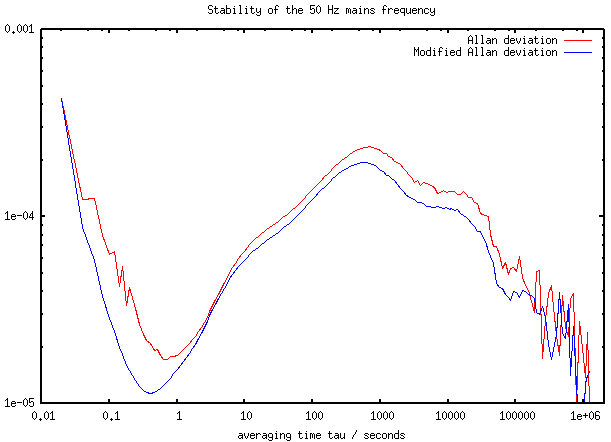
Accuracy And Stability Of The 50 Hz Mains Frequency
Many electric and electronic clocks use this not just for power but also as the reference frequency for keeping track of the time.
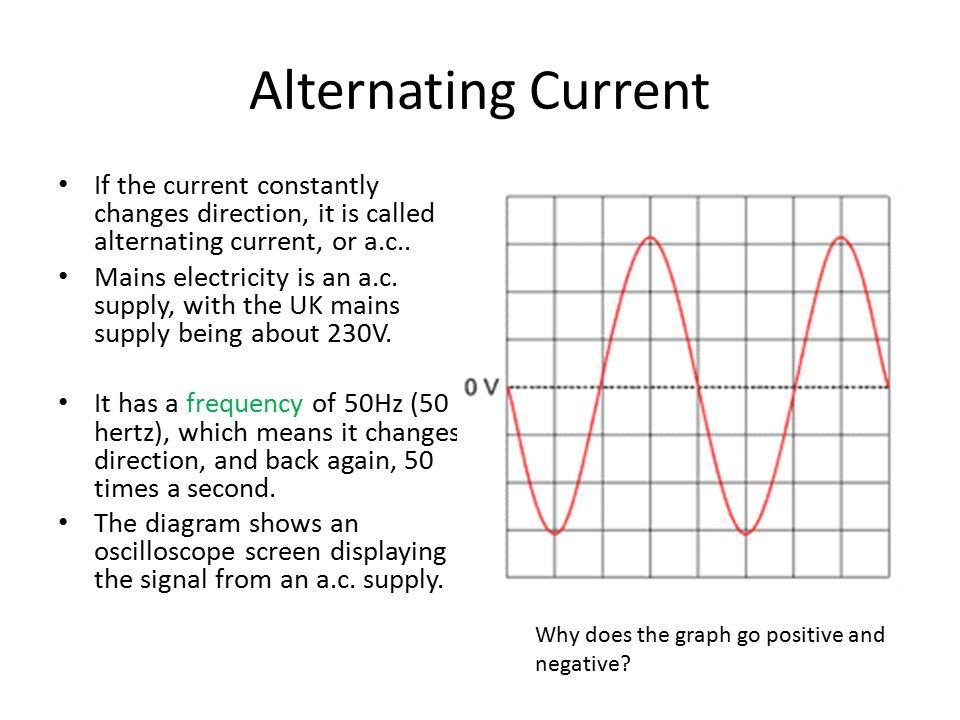
. The voltage and frequency of alternating current AC electricity used in homes varies from country to country throughout the world. Why is 60Hz frequency used in America. Mains electricity is an ac.
In the UK the mains electrical supply is generated at a frequency of 50 Hertz Hz and is delivered to. The period is the duration of one cycle in a repeating event so the period is the reciprocal of the frequency. Mains electricity is supplied as alternating current ac.
This provides an alternating current ac. It is fed with alternating current which has a frequency of approximately 500 Hz. Foreign enclaves such as large industrial plants or overseas military bases may have a different standard voltage or frequency from the surrounding areas.
The frequency of the UK mains electricity supply is. By transporting the electrical energy from a power station at a high. The grid frequency power frequency is the same allover the grid.
From 1 January 2004 the mains supply should be 230V -6 10 50 Hz 1. The two commonly used frequencies are 50 Hz and 60 Hz. The GB mains frequency is nominally 50Hz.
This oscillation is known as electrical frequency. Alternating current that oscillates 50 times a second as it does in the UK is said to have a. What is the mains voltage in the United Kingdom.
Mains electricity is AC alternating current The electricity in the mains supply switches direction 50 times per second. Mains electricity Mains electricity refers to the power that is brought into peoples homes. What is the frequency of UK mains electricity.
The UK mains supply is 230-240V. Iraq 230V 50Hz United Kingdom 230240V 50Hz Ireland Eire 230V 50Hz United States 120240V 60Hz. 230Vac 10 to -6.
In the UK it has a frequency of 50 cycles per second or 50 hertz Hz which means that it changes direction and back again 50 times each second. The mains supply in the UK is an alternating current ac voltage at. The other type of current is DC - direct current.
1 row Free data sheet by GB Audio Note. The mains power supply in most countries is AC alternating current at 50 eg. It has a peak voltage of 330V which has the same heating effect as a steady voltage of 230V - therefore the voltage is spoken about as 220V RMS.
Just like the rest of Europe the voltage in the UK is 230 volts and the frequency is 50 Hz. 12 50 110 230 In the UK the mains electricity supply is volts. Mains electricity is an alternating current ac supply.
Mains electricity by country includes a list of countries and territories with the plugs voltages and frequencies they commonly use for providing electrical power to low voltage appliances equipment and lighting typically found in homes and offices. On our island we have an electrical mains of 127 and 220 Volt and 50 Hertz. According to the Wikipedia article on mains electricity by country the power in the UK.
Typically either 110-volt AC 110V or 220-volt AC 220V is used. Alternating current can easily be converted to higher and lower voltages by a transformer. Q4a Use numbers given in the box to complete the following sentences.
Mains electricity being an alternating current does not have positive and negative sides to the power source. National Grid is obliged by its licence commitments to control the frequency within 1 of 50Hz so it can fluctuate between 495Hz to 505Hz. The sine wave measurement shown in AC electrical systems is measured per second and refereed to as Hertz Hz so 100Hz means 100 waves per second.
In the UK the domestic electricity supply has a frequency of 50 Hz and a potential difference of about 230 V. UK mains voltage is 230 Volts. Supply is 50 cycles per second or 50 hertz.
In the UK the electricity supply is 50Hz this means that the direction of the current changes 50 times a second. Europe or 60 eg. For industrial machinery see industrial and multiphase power plugs and sockets Some countries have more than one voltage available.
But this is too fast to see so lights dont appear to flicker although they are 50 times every second. High mains voltages can reduce power supply long term reliability and low mains voltages can fall outside the input operating. The potential difference is 230V.
The mains electricity supply in the UK is AC- alternating current. However the normal operational limits are 498Hz to 502Hz. Member countries of the European Union are presently striving to achieve a common mains standard.
Therefore the frequency of ac. Power stations produce electricity using magnets. In the UK we can see a wide variation in voltage levels and this is one of the reasons why investment in voltage optimisation can generate energy savings.
A frequency of 50 Hz means the direction of the current changes back and forth 50 times every second. The larger the current faster the electrons travel the greater the friction. Because we are a small island about 150000 inhabitants and are located close to the USA some electrical equipment sold is imported from the States so made for.
Single-phase or three-phase power is most commonly used today although two-phase systems were used early in the 20th century. 400Vac 10 to -6. Alternating current means that the current continually changes direction.
230 V 50 Hz Check out all plug types used around the world. 2 marks TopLevelscouk Page 9 b The diagram shows a hairdryer designed to be used with the UK mains supply.
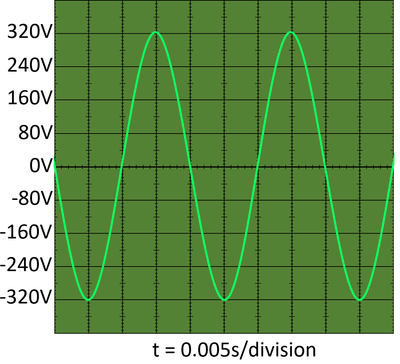
Mains Electricity Key Stage Wiki
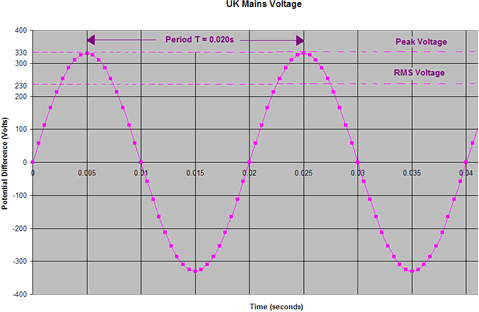
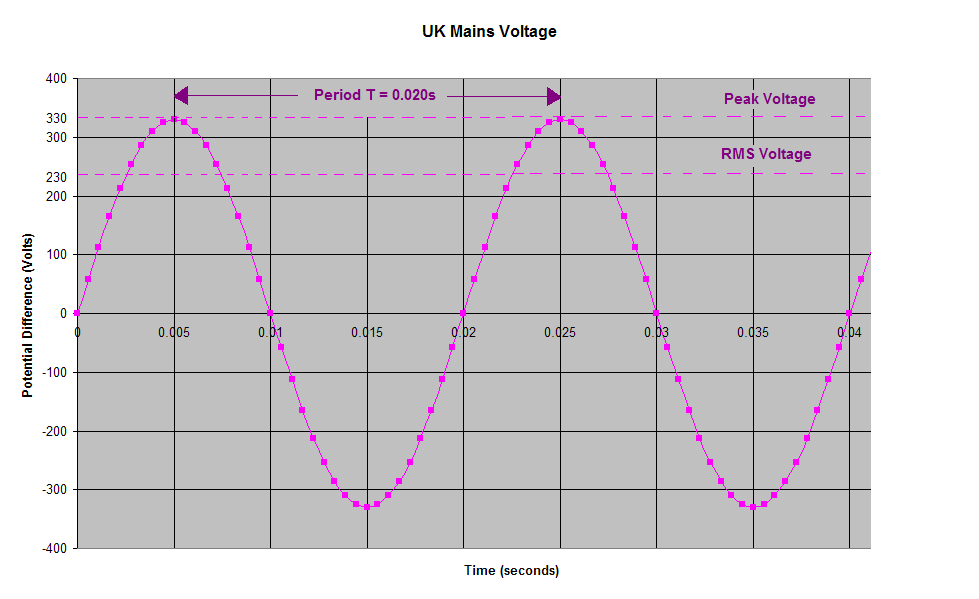
No comments for "What Is the Frequency of Uk Mains Electricity"
Post a Comment